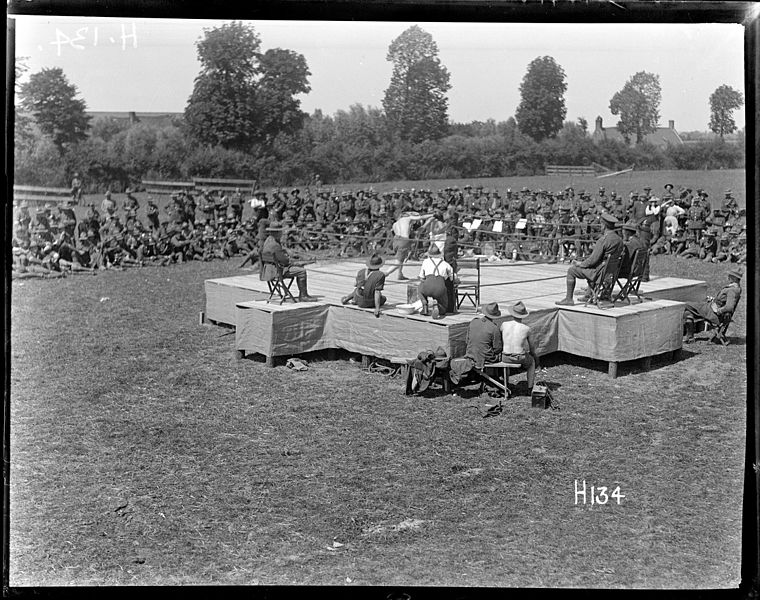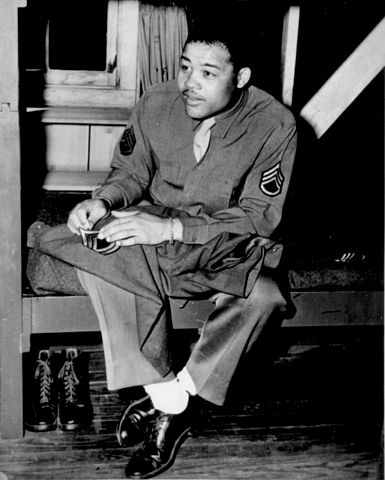The relationship between boxing and warfare extends beyond their shared physical nature. Throughout history, the sport has been vital in preparing soldiers for the rigors of battle.
Boxing was not directly used in war, but it played a significant role in military training. It was believed that boxing prepared soldiers for hand-to-hand combat, improved their success with bayonets, and boosted overall confidence. Additionally, boxing was utilized for morale-building and entertainment purposes among troops.
In the following sections, we will delve into the significant contributions boxing made to the military during World War I and World War II.
Boxing’s Role during World War I
During World War I, the United States acknowledged the importance of boxing in equipping troops for battle, raising morale, and offering entertainment at military camps and stations. As a result, the U.S. Army integrated boxing into regular training exercises, while the U.S. Navy primarily focused on the sport as a source of entertainment.
The Commission on Training Camp Activities developed distinct training programs tailored to the U.S. war effort, incorporating compulsory boxing sessions. These programs aimed to prepare troops for close combat, enhance their skills with bayonets, and foster overall self-assurance.
To guarantee effective training, each major camp assigned an experienced boxer as the camp instructor, supported by a team of trainers collaborating with individual units.
On October 27, 1917, former world lightweight champion Willie Ritchie was appointed as the boxing instructor at Camp Lewis in southern Pierce County. Despite being exempt from the draft due to hearing impairments, Ritchie fervently advocated boxing as the perfect sport for war preparation.
He contended that boxing not only utilized the same muscles required for bayonet combat but also taught soldiers to withstand and deliver blows, thereby bolstering their confidence. With a team of 472 boxing assistants, Ritchie trained small groups of 40 to 60 soldiers each.

Compulsory daily boxing classes at Camp Lewis were supported by Commanding General Henry A. Greene. The training regimen was modified in March 1918 to incorporate 30 minutes of daily shadow boxing followed by 30 minutes of an alternative exercise. Shadow boxing was believed to enhance agility, attentiveness, and mental sharpness in combat situations.
Ritchie also organized benefit bouts to generate funds for sports activities and entertain troops. In June 1918, he arranged a divisional ring tournament, a knockout event that began with 150 boxers and concluded with 14 champions, one in each weight category.
While the U.S. Navy incorporated boxing into its training schedule, it was not as central to their efforts as it was for the army. For sailors, boxing was viewed more as a leisure and morale-enhancing activity.
At the Puget Sound Naval Shipyard in Bremerton, the boxing instructor concentrated on identifying and training boxers for the station team. Entertainment bouts were arranged between fleet boxers, pitting fighters from one ship against those from another.
The effectiveness of the World War I boxing training program remains unclear. However, the exposure of numerous men to boxing during the war had a significant impact on the sport’s popularity, leading to a rise in interest in the 1920s. Consequently, boxing played an essential role not only in preparing soldiers for battle but also in shaping the cultural landscape of the post-war period.
Boxing’s Role during World War II

As World War II progressed, a prominent American hero emerged not as a soldier wielding a rifle or piloting an aircraft, but as a boxer fighting with his fists: Joe Louis Barrow, commonly known as Joe Louis.
Having been the world heavyweight champion since 1937, Louis was more than just an African American athlete in an army uniform when he enlisted in early 1942.
In 1936, Louis encountered his most famous rival, German boxer Max Schmeling. Although Louis had vanquished several previous champions, Schmeling knocked him out after twelve rounds.
A highly anticipated rematch in 1938 at Yankee Stadium symbolized an ideological battle, pitting a black American against someone believed to be a Hitler ally.
Despite propaganda vilifying Schmeling, he had never joined the Nazi party and had rescued two Jewish teenagers during the Kristallnacht raids. Louis emerged victorious in the rematch, knocking Schmeling out in just over two minutes, and solidifying his status as a national icon.
Louis continued boxing as the world edged closer to war. In October 1940, he registered for the draft and eagerly sought ways to contribute to the war effort.
Despite receiving backlash from the African American community, Louis donated his earnings from a championship title defense match to the US Navy Relief Society, an organization supporting a segregated Navy. The controversy waned after the attack on Pearl Harbor, with Louis enlisting in the US Army and donating $89,092 to the Navy Relief Society the following day.
Although Louis never engaged in combat, his popularity made him invaluable to the war effort. He appeared in war bond advertisements and furthered his hero status after winning another title defense match in March 1942, raising money for the Army Emergency Relief Fund.
Louis was made a goodwill ambassador to appeal to African Americans and present a united front against Nazi oppression. The Army created a traveling group of black boxers touring the United States and Europe, with Louis refusing to perform before segregated audiences.
The show, featuring boxing and entertainment from the likes of Sugar Ray Robinson, was a success. In 1943, the tour spent 100 days on the road in the United States, and by 1944, Louis was in Europe, visiting troops and wounded soldiers from the Normandy campaign. The effect of his visits was profound, with soldiers expressing immense enthusiasm and admiration for the Brown Bomber.
In 1945, Louis received the Legion of Merit, having entertained two million soldiers through boxing exhibitions. Discharged that year as a beloved hero, he retained his heavyweight title until his retirement in 1949.
Despite a brief comeback, Louis ultimately retired for good after losing to fellow army veteran Rocky Marciano. Joe Louis remains one of America’s most treasured boxers, symbolizing a generation that overcame the trials of the Great Depression and World War II.
Final thoughts
Boxing’s role in both World War I and World War II transcended the sport itself, functioning as a crucial component for training, morale-boosting, and even propaganda. Integrating boxing into military training equipped soldiers for close combat while providing entertainment and promoting camaraderie among troops.
The stories of Willie Ritchie, Joe Louis, and numerous other boxers who served their countries during wartime exemplify the unbreakable connection between the sport and society. These athletes not only entertained and inspired millions but also played pivotal roles in shaping public perception and forging national identity during two of the most turbulent periods in modern history.

